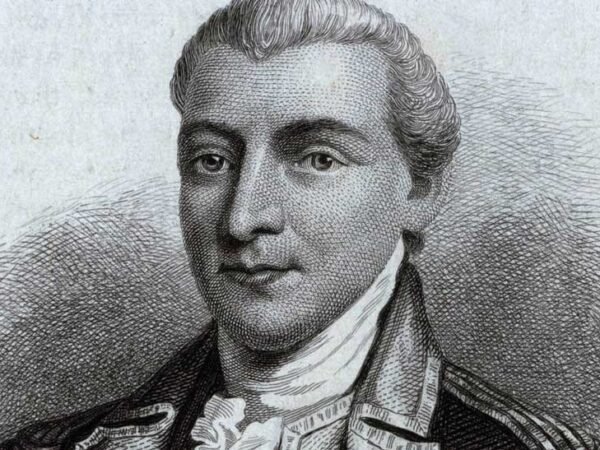I. Introduction
Timothy Nielsen is a name synonymous with the unseen artistry of cinematic sound. While audiences often laud actors and directors, it’s the meticulous work of sound designers like Nielsen that truly immerses them in a film’s world. His profound influence has sculpted the auditory landscapes of some of the most memorable movies in recent history, making him a quiet force behind the magic of the big screen.
Nielsen’s approach to sound is more than technical; it’s an artistic endeavor. He masterfully employs audio as a powerful storytelling device, deepening emotional connections and enriching narratives. His journey, particularly his long-standing collaboration with Skywalker Sound, exemplifies a relentless pursuit of excellence and innovation that has left an indelible mark on the film industry.
II. Early Life and Formative Years
Born on March 18, 1971, Timothy Nielsen’s fascination with sound began early, fueled by an innate curiosity about how audio shapes perception. These formative years were crucial, laying the groundwork for a career dedicated to the intricate craft of sonic artistry.
His academic path led him to the University of Southern California, a prestigious institution that provided a robust foundation in film sound. Here, his understanding of audio production deepened, setting him firmly on the path to professional mastery. After graduation, he moved to the San Francisco area, embarking on what would become a distinguished career at Skywalker Sound, a name revered for its unparalleled audio post-production.
III. The Skywalker Sound Chapter
Timothy Nielsen’s professional trajectory took a pivotal turn when he joined Skywalker Sound, a Lucasfilm division celebrated for its pioneering work in audio post-production. This marked the beginning of a highly productive period where Nielsen lent his talents to a vast array of cinematic masterpieces. Within Skywalker Sound, he embraced diverse and critical roles, including supervising sound editor, sound designer, and re-recording mixer. These positions empowered him to meticulously shape and oversee the entire sonic fabric of films, from the subtle nuances of dialogue to the explosive impact of special effects.
His responsibilities at Skywalker Sound were comprehensive. They ranged from conceptualizing a film’s overarching sound aesthetic to painstakingly crafting individual audio elements. This demanding process involved close collaboration with directors, producers, and fellow sound professionals, all to ensure the audio perfectly complemented the visual narrative, creating a truly immersive experience for the audience.
IV. Defining Projects and Innovations
Nielsen’s filmography is a powerful testament to his versatility and exceptional skill, featuring an impressive roster of blockbuster films that have redefined cinematic sound. His work on James Cameron’s Avatar (2009) showcased his unique ability to conjure alien soundscapes that felt both fantastical and remarkably authentic. For Steven Spielberg’s War Horse (2011), he expertly wove together the sounds of conflict with the story’s emotional depth, while Disney’s Moana (2016) highlighted his knack for creating vibrant, engaging musical and environmental soundscapes.
Beyond these, his contributions extend to monumental franchises like The Lord of the Rings trilogy, where he was instrumental in building the epic sonic world of Middle-earth, and various Star Wars films, where he continued the legacy of iconic sound design. Nielsen is also widely recognized for his involvement in developing the Universal Category System (UCS), a standardized method for organizing sound libraries. This innovation has significantly streamlined workflows for sound professionals, demonstrating his commitment not just to artistic excellence but also to advancing the technical bedrock of his craft.
V. Accolades and Industry Recognition
Timothy Nielsen’s extraordinary talent and unwavering dedication have consistently earned him high praise within the industry. He has accumulated numerous accolades and nominations throughout his career, firmly establishing his reputation as a preeminent figure in sound design. Notably, he has been a recurring presence at the Motion Picture Sound Editors (MPSE) Golden Reel Awards, one of the most esteemed honors in sound editing. His work on diverse projects has brought him multiple wins and nominations, underscoring the immense respect he commands from his peers.
His contributions to both critically acclaimed and commercially successful films are frequently lauded for their innovative soundscapes and their profound ability to elevate the cinematic experience. This consistent recognition from industry bodies and critics alike speaks volumes about his deep impact and enduring influence on the art and science of film sound.
VI. Beyond the Silver Screen
While Timothy Nielsen is predominantly celebrated for his work in feature films, his expertise extends far beyond the confines of the silver screen. He has actively engaged in various other ventures and collaborations, further showcasing the breadth of his skills and his commitment to the wider audio community. His involvement in projects outside traditional filmmaking often includes consulting, delivering lectures, and contributing to the evolution of sound technologies and methodologies.
Nielsen’s legacy isn’t solely defined by the films he’s worked on; it’s also shaped by his tireless efforts to advance the craft of sound design for future generations. His influence is evident in the widespread adoption of standardized sound organization systems and in the inspiration he provides to aspiring sound professionals. He continues to actively shape the future of cinematic sound, consistently pushing boundaries and exploring new frontiers in audio storytelling.
VII. Conclusion
In essence, Timothy Nielsen’s career stands as a powerful testament to the transformative impact a dedicated sound designer can have on the cinematic experience. From his foundational education and entry into the industry to his distinguished tenure at Skywalker Sound, Nielsen has consistently exemplified an unparalleled commitment to both excellence and innovation. His work on landmark films such as Avatar, War Horse, and Moana, among countless others, vividly demonstrates his capacity to craft immersive and emotionally resonant soundscapes that elevate the very act of storytelling.
Nielsen’s contributions extend beyond individual projects; his pivotal involvement in initiatives like the Universal Category System underscores his dedication to advancing the technical and organizational facets of sound design. Through his numerous awards and the consistent acclaim from his peers, Timothy Nielsen has firmly cemented his status as a true pioneer and an enduring influence on the art and science of cinematic sound. His remarkable legacy will undoubtedly continue to inspire and shape the future of audio in film for generations to come.













